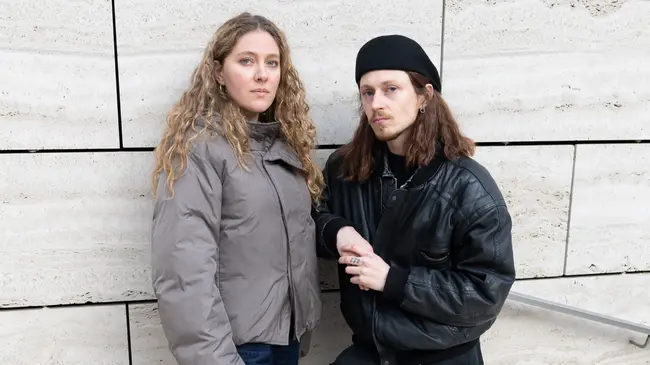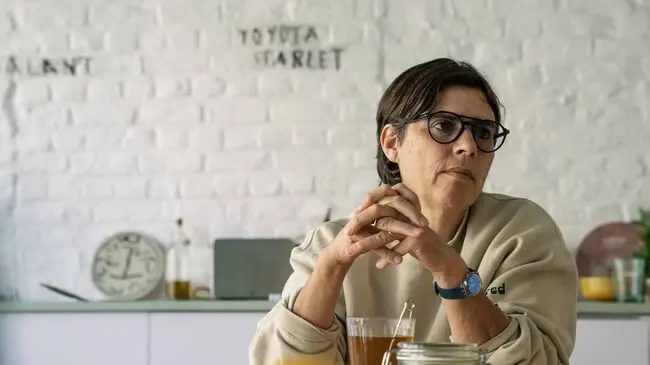I think ecology is somewhat of an art

We visited the Alexandria: Past Futures exhibition at BOZAR with Egyptian artist, Salma El Serafi. Salma is a painter and researcher in terrestrial ecology at KU Leuven. Through her eyes, we got an insight into how she connected with fellow Egyptian and Arab artists and works. We discussed technicality, space, ecology and her home country. Salma captures subtle interactions between people and their surroundings through her art.
How do you describe your style as an artist?
I would say I am trying to develop my own style. If you look at my work, especially my paintings, I usually work in a realistic style, almost hyper-realism, but it is not a style that is unique to me at all. I like to say that I am not a camera, so I need to steer away from realism and its goal, therefore I am trying to venture into surrealism or artificial realism, which was coined by George Condo, one of my favourite painters.
Are there specific elements that you prioritise in your creative process?
Yes. For a photograph, I think my choice of a ‘mundane’ subject matter creates an element of surprise which is amplified by high contrast and negative space. In terms of colour choice, I often find myself grey-scaling my photos because I sometimes find that colour can distract from the form I am trying to take apart and understand in my image. With my paintings, I almost always work on wood that was going to get thrown away, and I sand it down myself. I find it sustainable and it’s a texture that I can control. I enjoy the look of a realistic black-and-white painting, set against a background that's unexpectedly lively. Size is also important; making huge paintings makes you feel small as an artist and as a viewer.
I am not a camera, so I need to steer away from realism and its goal
What did you think about the exhibition?
I had an impression that it would consist mostly of ancient artefacts that have been retrieved and more art history-related things. But I was pleasantly surprised, especially when I noticed that the artists were mostly Egyptian.
I was especially moved by Mona Marzouk’s work. However, it was set against a backdrop of ancient artefacts that I personally don’t believe should be in Europe. It is common for non-Arabs to instantly associate Egyptian citizens with the ancient Egyptian civilization. Think ‘Dance like an Egyptian’ etc. So, to be honest, I don’t think that it’s necessary to curate this amazing show presenting all this great artwork by Egyptian people, then have the artefacts riddled in between the different rooms. Obviously, Alexandria has a very significant and symbolic history, but I felt that this pushes a certain narrative about Egyptians. I love the representation of Egyptian artists as a North African POC, but it could have been a stand-alone show without those artefacts.
Nonetheless, the diversity and style of the artists represented were incredibly vast, I loved it.
Were there other pieces or artists that you connected with?
Domestic Tourism I by Maha Maamoun. It was a photograph that showed people at the beach, playing. It made me feel nostalgic for Egypt, my home country. The title also made me think of Egypt’s economic situation; domestic tourism, these days, in my opinion, is very controlled by the upper classes. I thought her work was a good ode to the beauty that Egypt has to offer us. At least that is what I took out of it. I also liked the Water Arm series by Jumana Manna; despite obvious differences in the plights both peoples face on the daily, I thought the installation was a simple way to portray the pressing ecological issues in Alexandria and in Palestine.
Making huge paintings makes you feel small as an artist
Can you describe the link between your work as an artist and your academic career as an ecologist?
I think that ecology is somewhat of an art. It’s based on the concept that everything, living and non-living things, urban, man-made or not, is interconnected and I find that poetic. To be able to identify things in the outdoors, I started taking pictures of my surroundings. These pictures became like memories, a massive collection of tiny creatures, mushrooms, plants, etc. In a way, the photos are a reminder for me that we are always connected to something or someone. When I feel alone, I like the thought that there is probably a bug or some form of life somewhere nearby living in the same moment I am.
Different Class works with the interest of their community at heart.
Our work’s purpose is to foster a solid network for independent artists, those who love them, and those who want to support them. Become a member to contribute to the local Belgian art scene.





